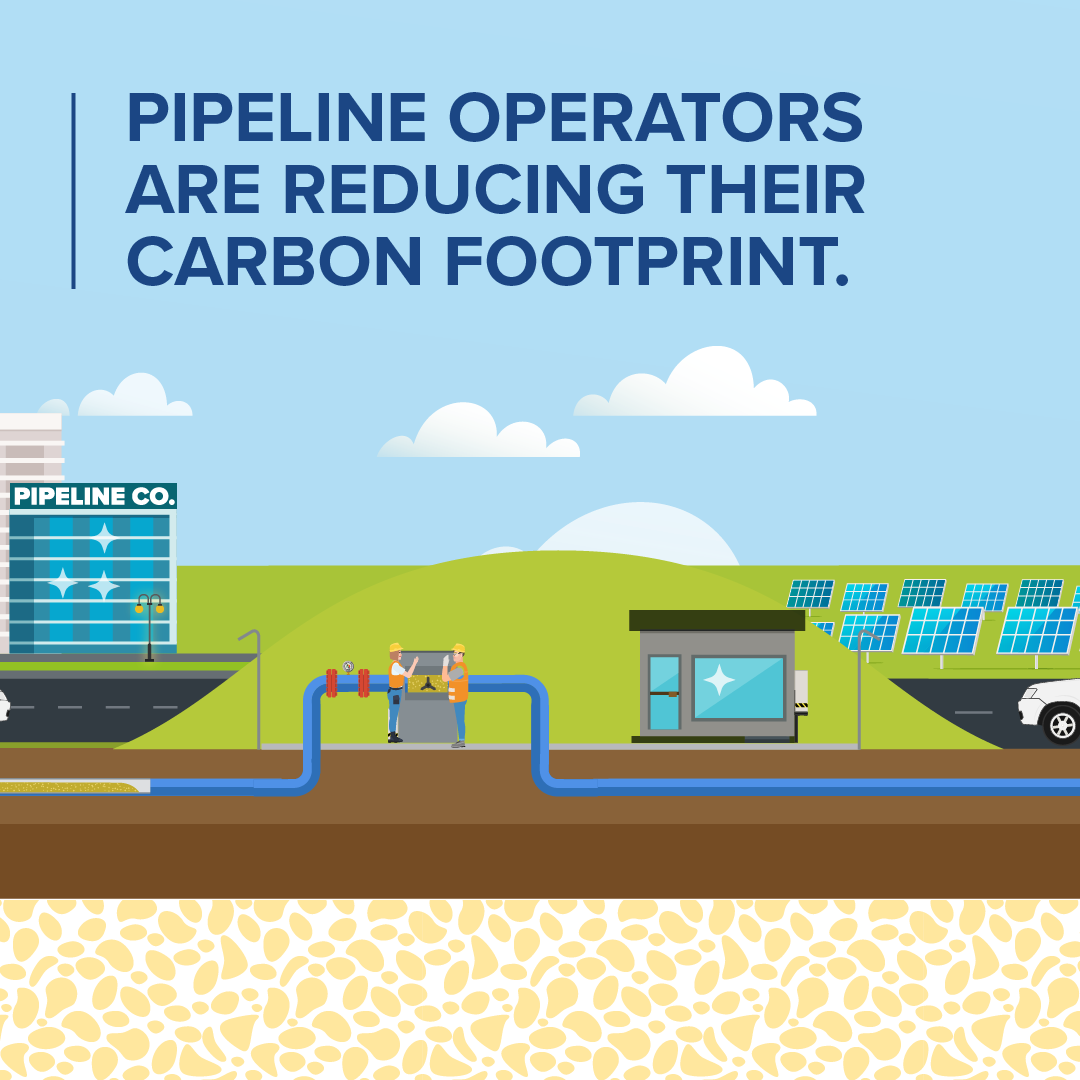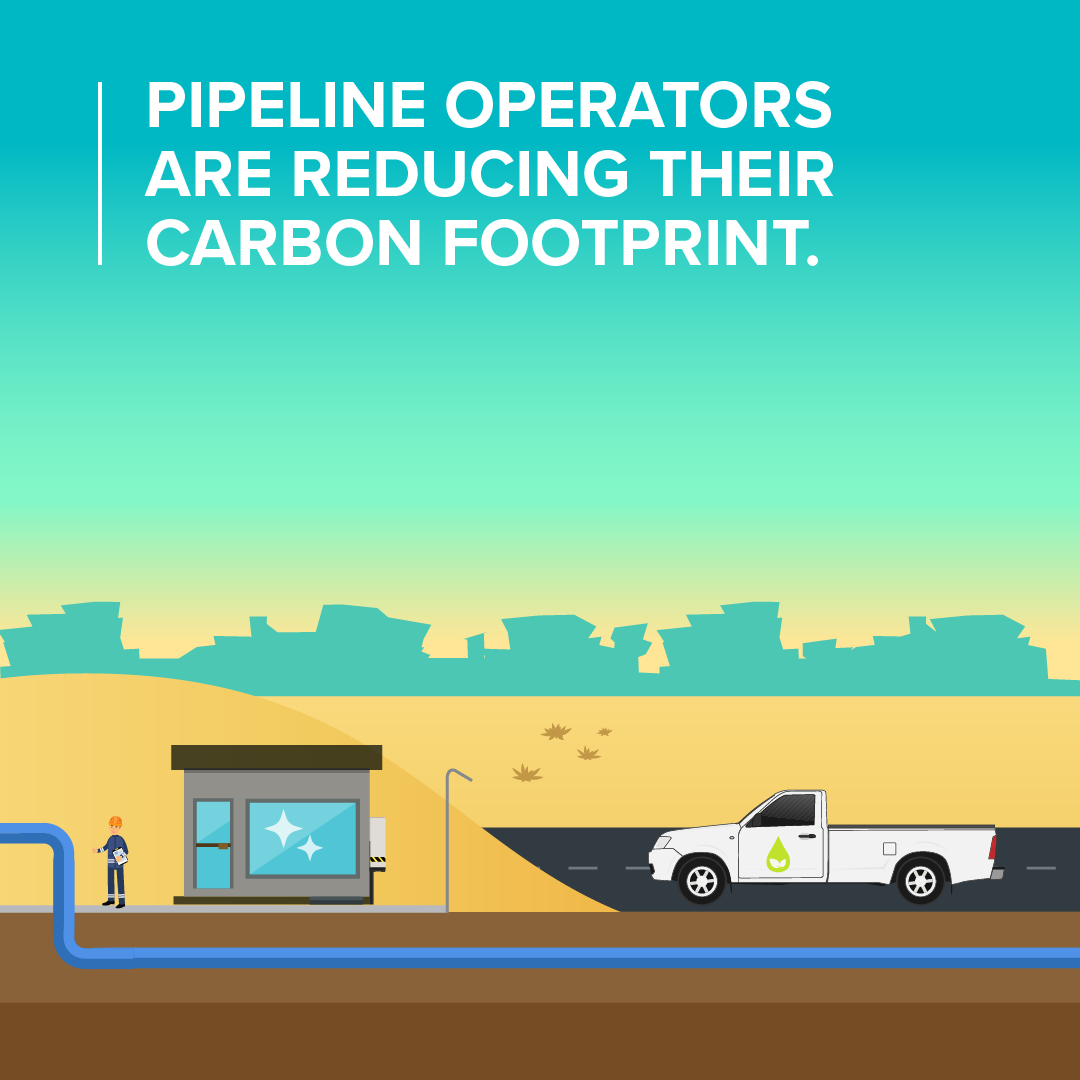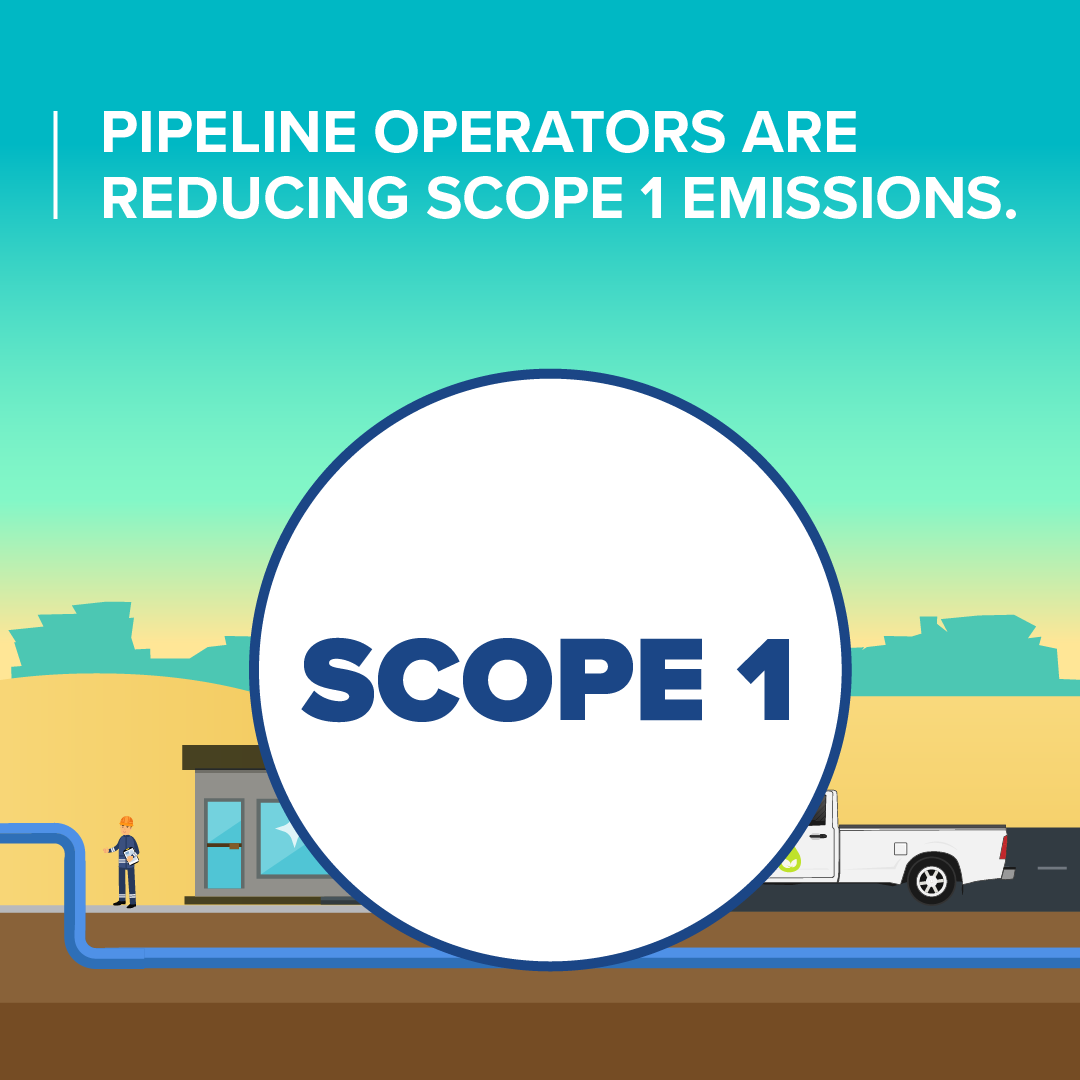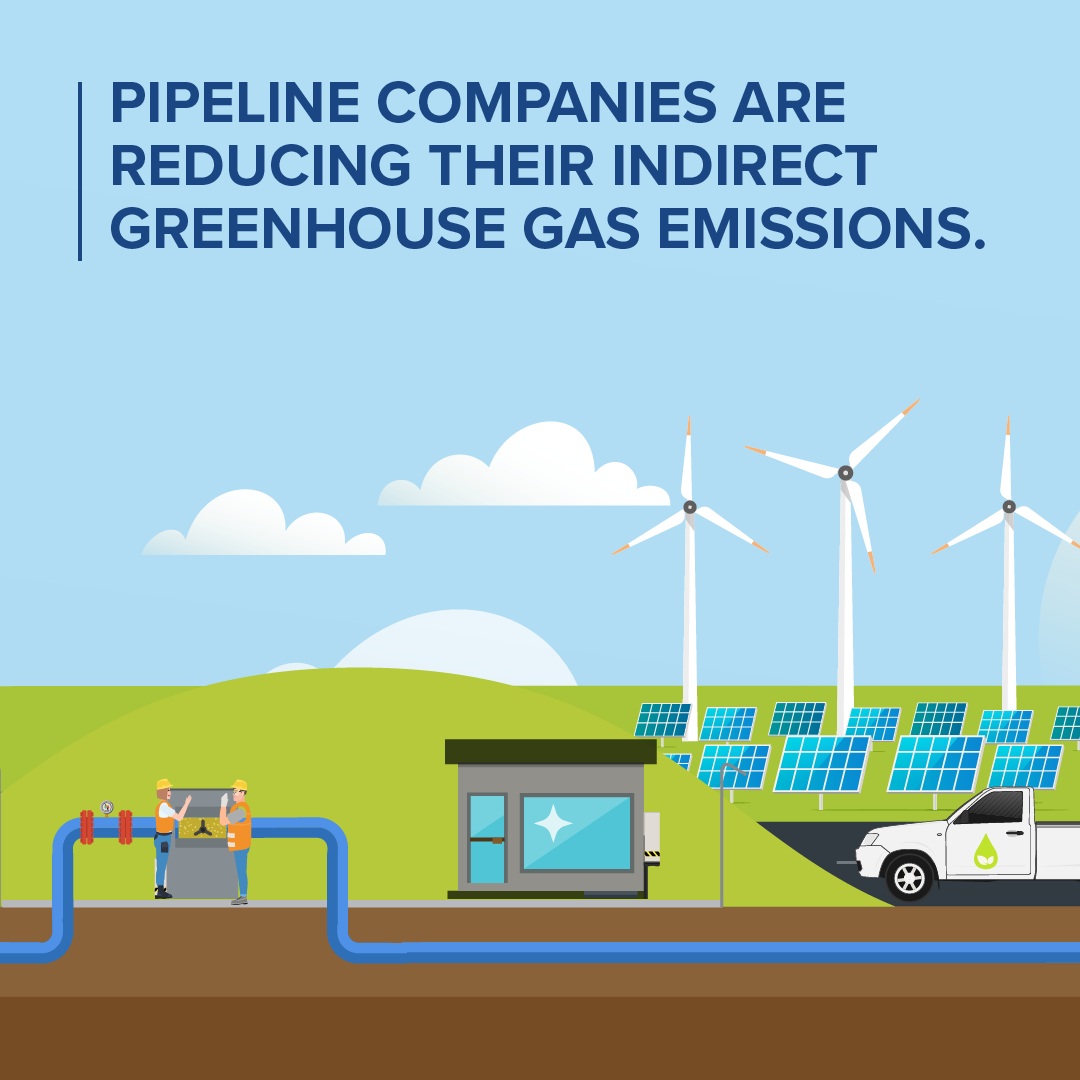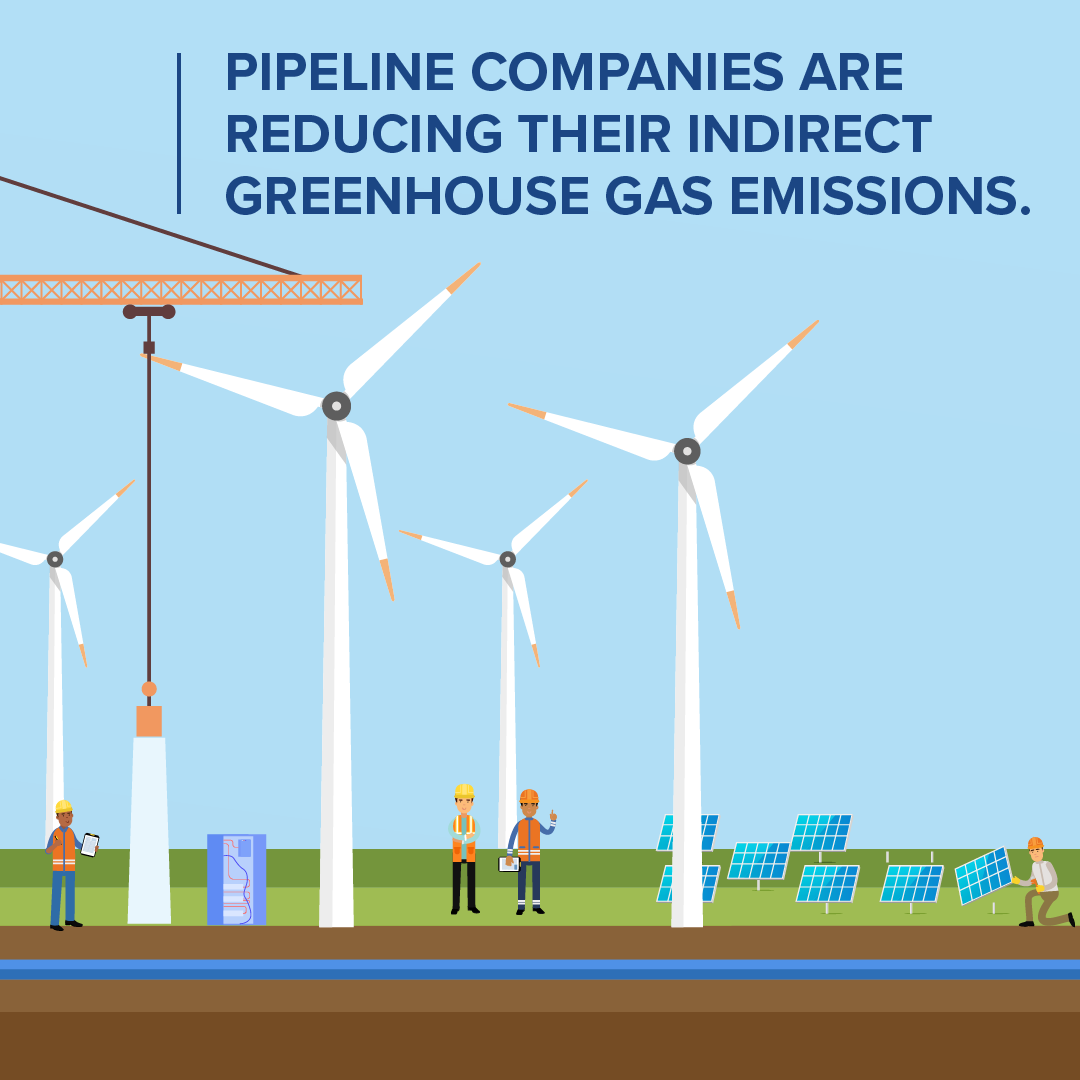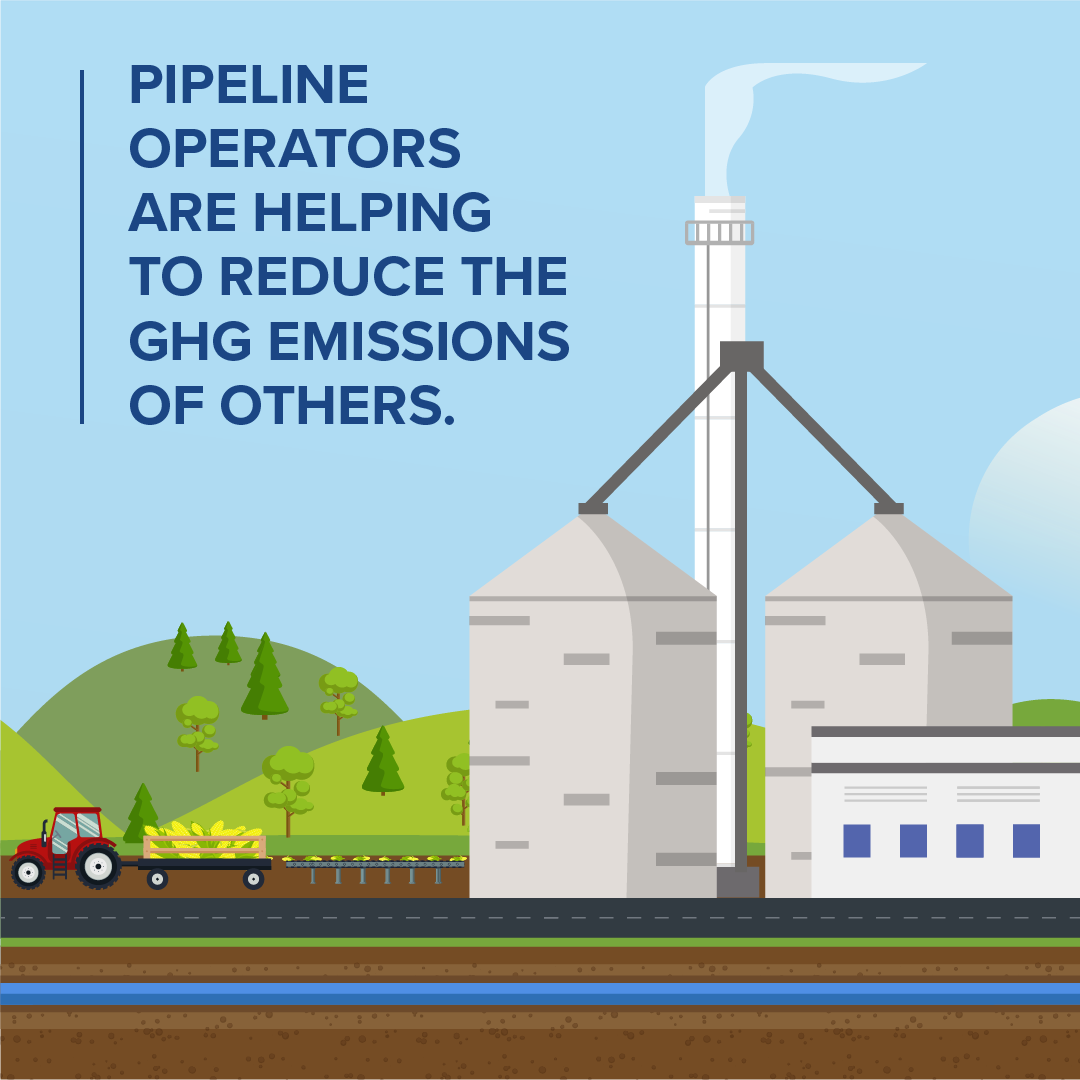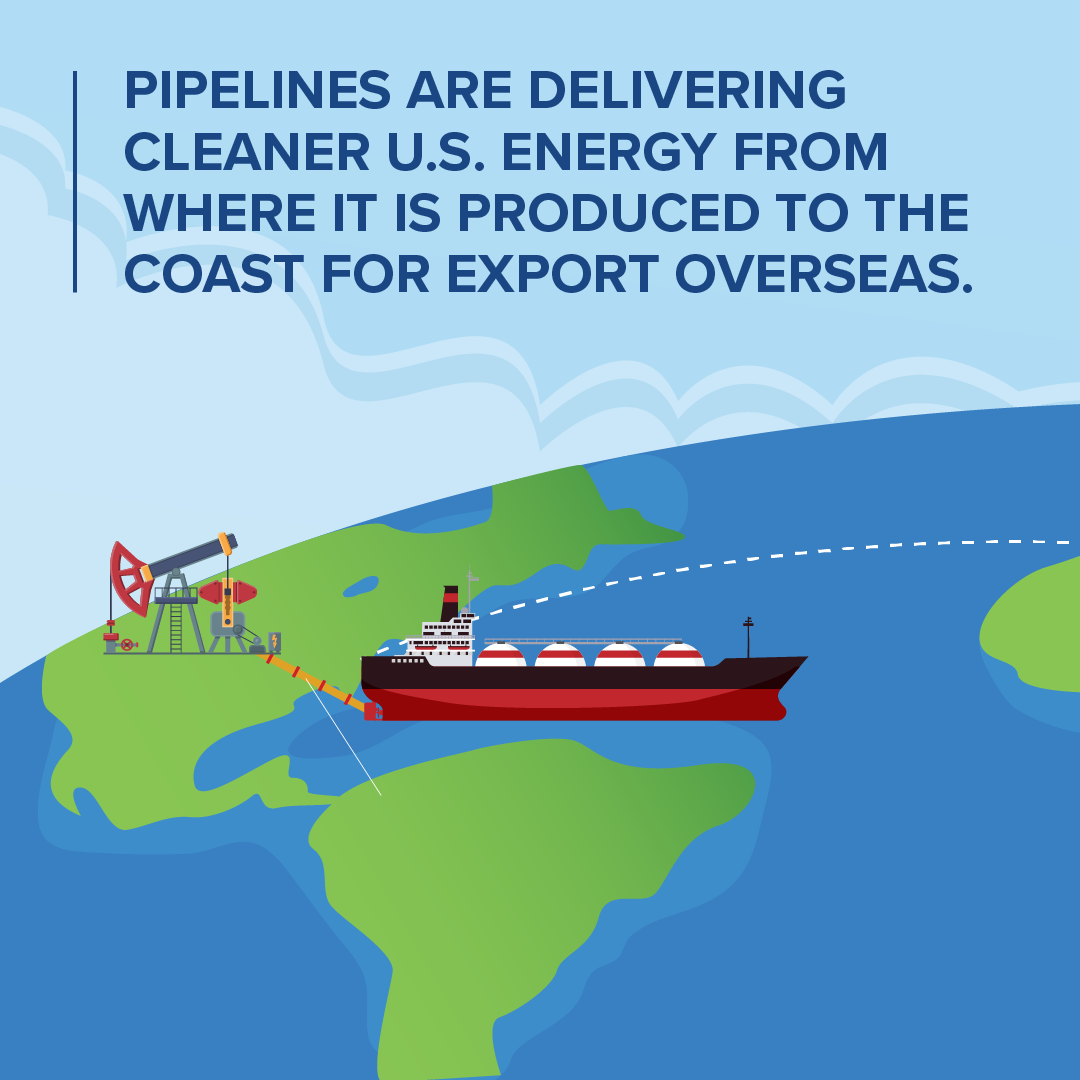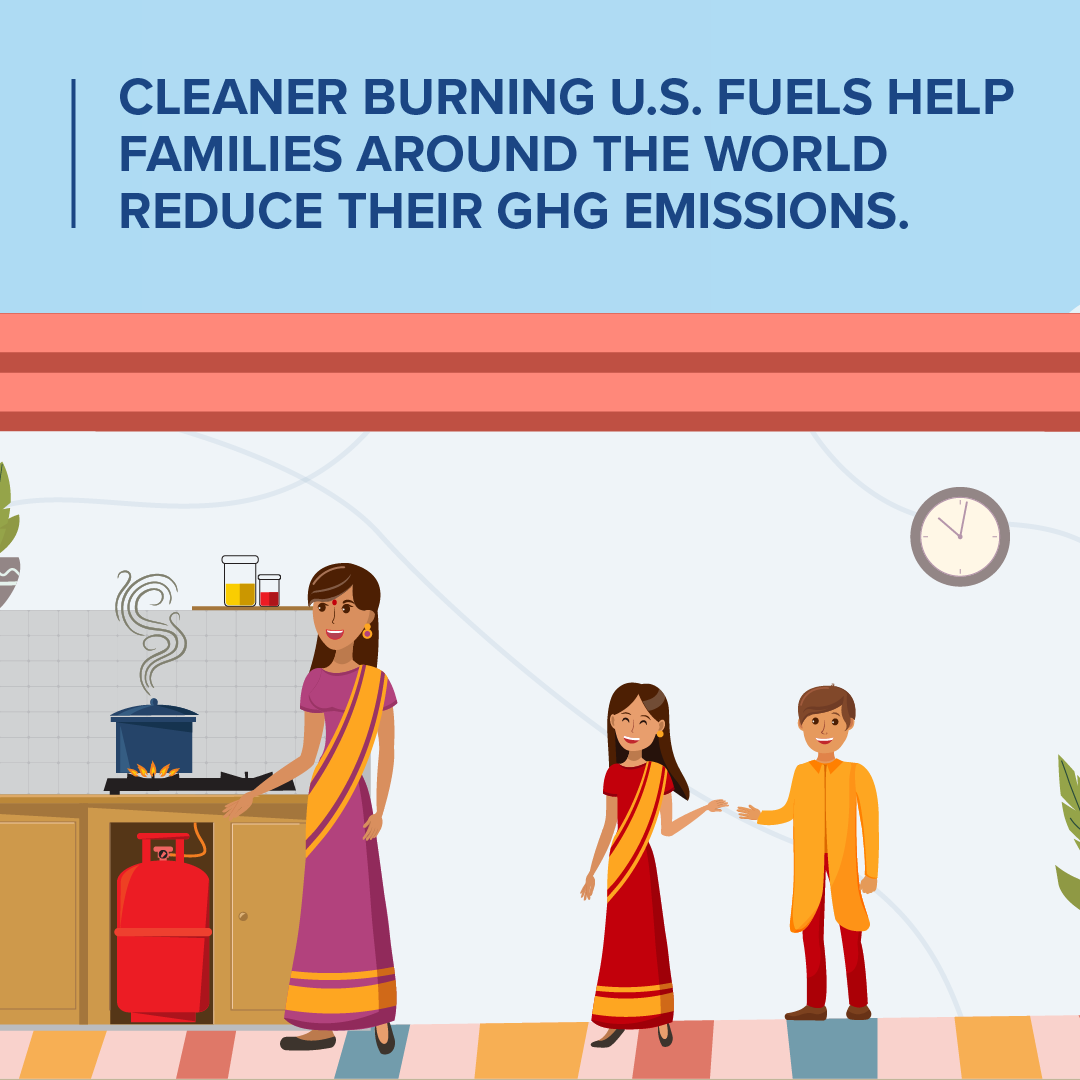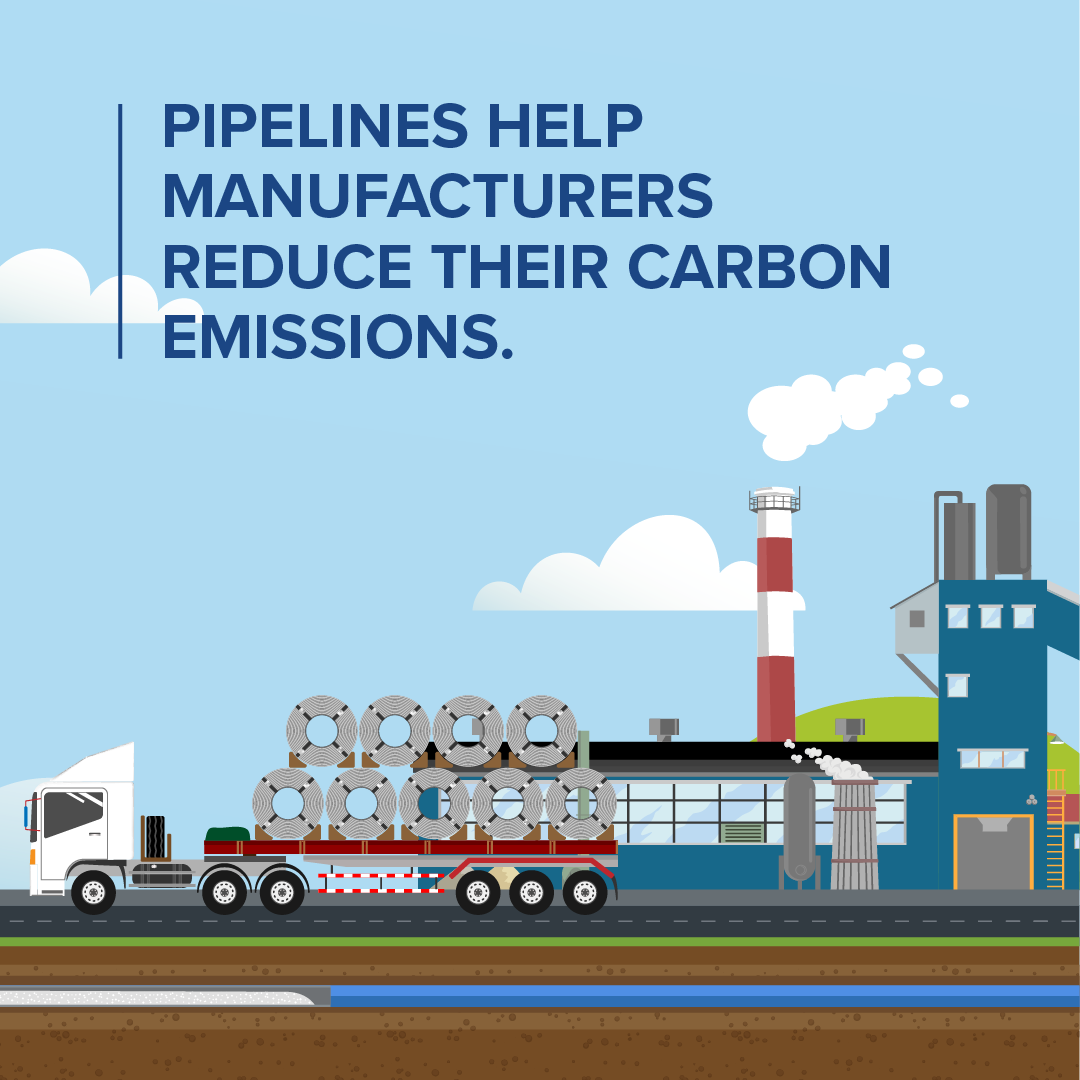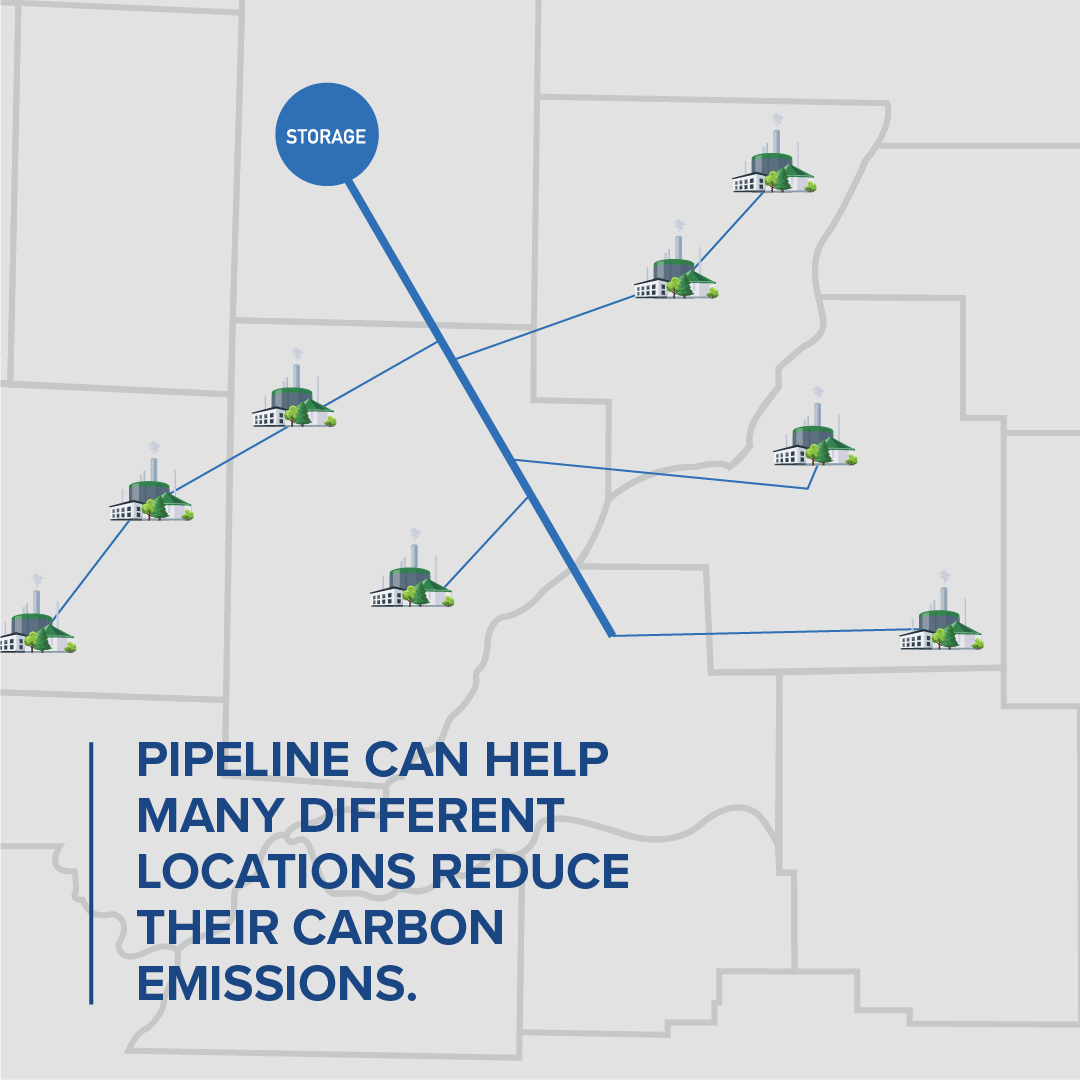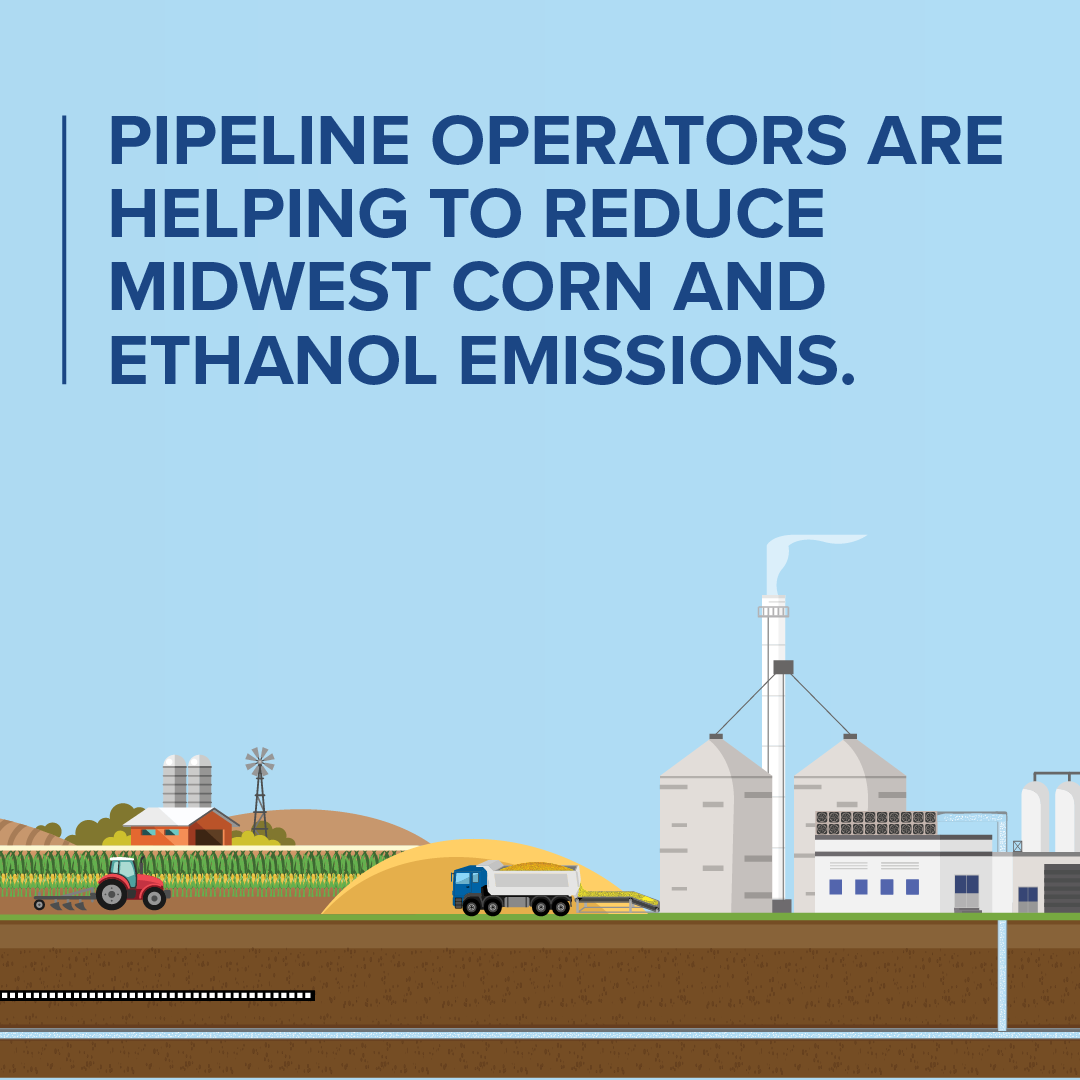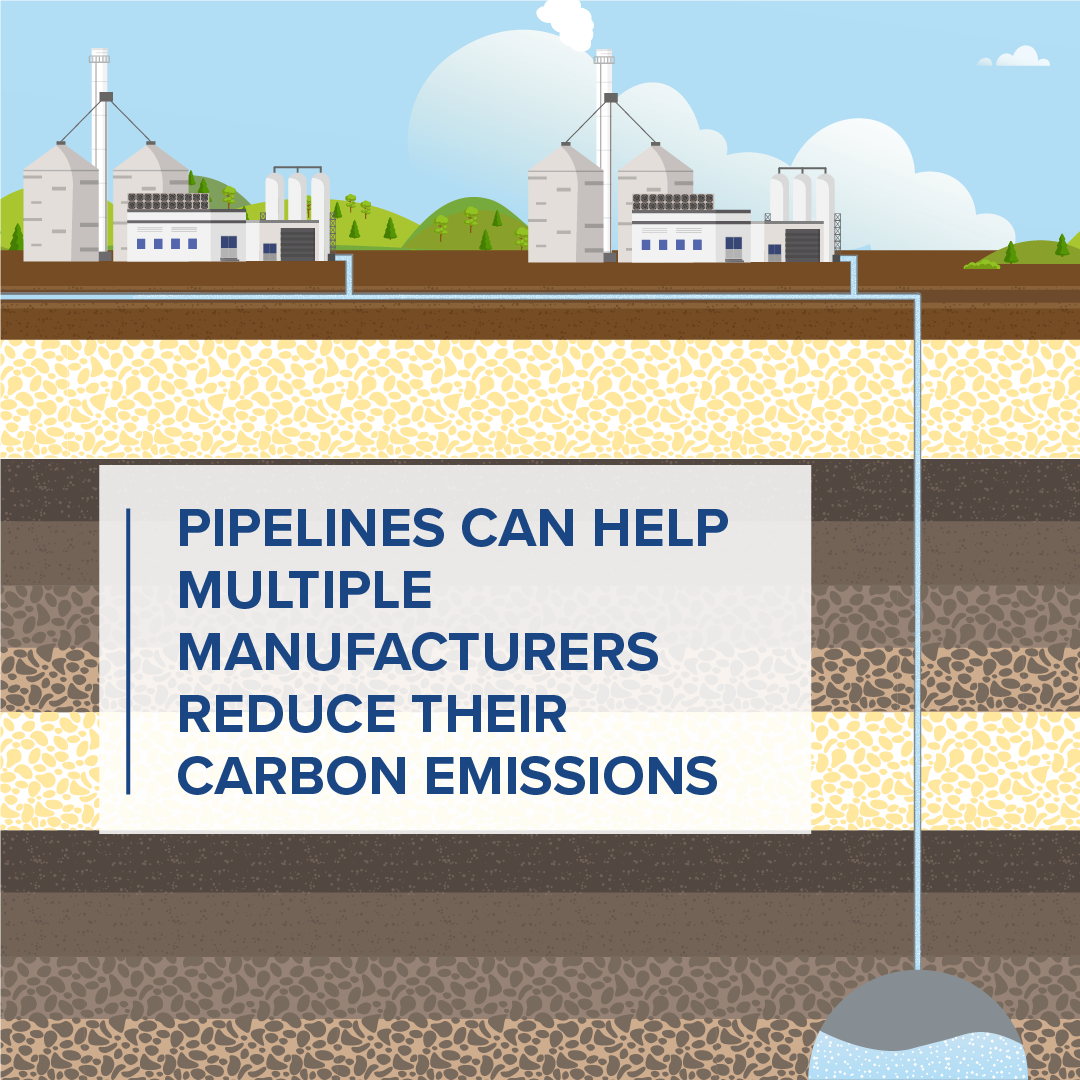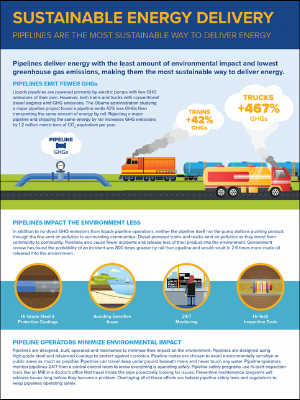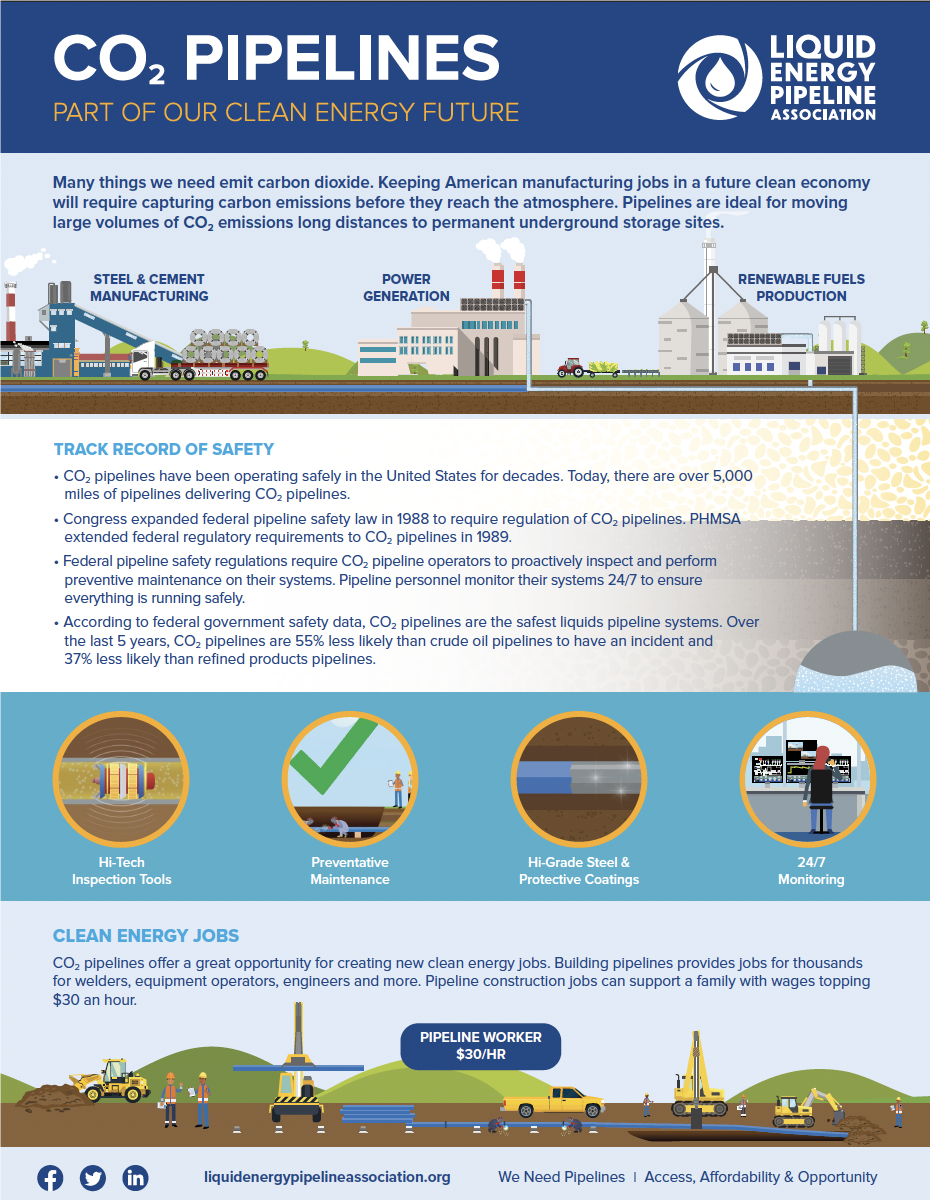
Reducing Emissions
Social Media Graphics
Share these images with your social media posts.
Suggested Social Media Posts
#Pipelines are powered primarily by electric pumps. The pipe, pumps, and valves of a liquids pipeline emit hardly any GHGs.
#Pipeline companies are reducing the emissions their facilities produce with more energy-efficient buildings.
#Pipeline companies are reducing the emissions of their fleets by investing in energy-efficient cars and trucks.
By shrinking their already-small carbon footprint, #pipeline operators are reducing Scope 1 emissions.
#Pipeline operators are reducing their indirect emissions by using more efficient pumps, adding drag-reducing agents to their pipelines, and using delivery strategies to maximize system efficiency.
#Pipeline operators are reducing their indirect emissions by using cleaner electrical power for their operations.
#Pipeline companies are not only investing in renewable energy projects to provide lower-carbon electricity to the grid, they are also investing in their own wind and solar facilities to provide clean power for their operations.
By using cleaner electricity and increasing efficiency, #pipeline operators are reducing Scope 2 emissions.
#Pipeline operators are delivering more renewable fuels with a lower carbon content than traditional fuels.
#Pipeline-delivered renewable diesel made from natural products helps trucks emit fewer greenhouse gasses.
Families in India, Asia and Africa are replacing higher-polluting cooking fuels with cleaner-burning American fuels.
Mothers and their children are the biggest beneficiaries of healthier indoor air, reduced cooking time, less effort to acquire fuel, and improved quality of life.
#Pipelines help protect the environment by transporting captured carbon for safe storage, keeping it out of the atmosphere.
#Pipelines are transporting captured carbon emissions from industrial facilities to permanent storage.
Making steel, aluminum and cement emits carbon dioxide, which can be captured before it enters the atmosphere.
A #pipeline can take the captured GHG emissions away, transporting them long distances if needed, delivering them to safe, permanent storage underground.
#Pipeline projects are planned to capture carbon emissions from ethanol plants that are producing cleaner-burning fuels with corn.
A CO2 #pipeline system can serve multiple plants in a region and deliver all of their GHG emissions to a permanent, underground storage site.
#Pipeline operators are helping to reduce the emissions of other energy users.
Videos
Reducing Greenhouse Gas Emissions from LEPA on Vimeo.
Pipeline Operators Are Doing Their Part from LEPA on Vimeo.
Few Direct Emissions from LEPA on Vimeo.
Pipelines Reducing Scope 1 Emissions from LEPA on Vimeo.
Reducing Indirect Emissions A from LEPA on Vimeo.
Reducing Indirect Emissions B from LEPA on Vimeo.
Pipelines Reducing Scope 2 Emissions from LEPA on Vimeo.
Pipelines Reducing Scope 3 Emissions from LEPA on Vimeo.
Delivering More Renewable Fuels from LEPA on Vimeo.
Cleaner Fuels for Export from LEPA on Vimeo.
Transporting Captured Emissions from LEPA on Vimeo.
Pipelines Are Part of the Solution from LEPA on Vimeo.


